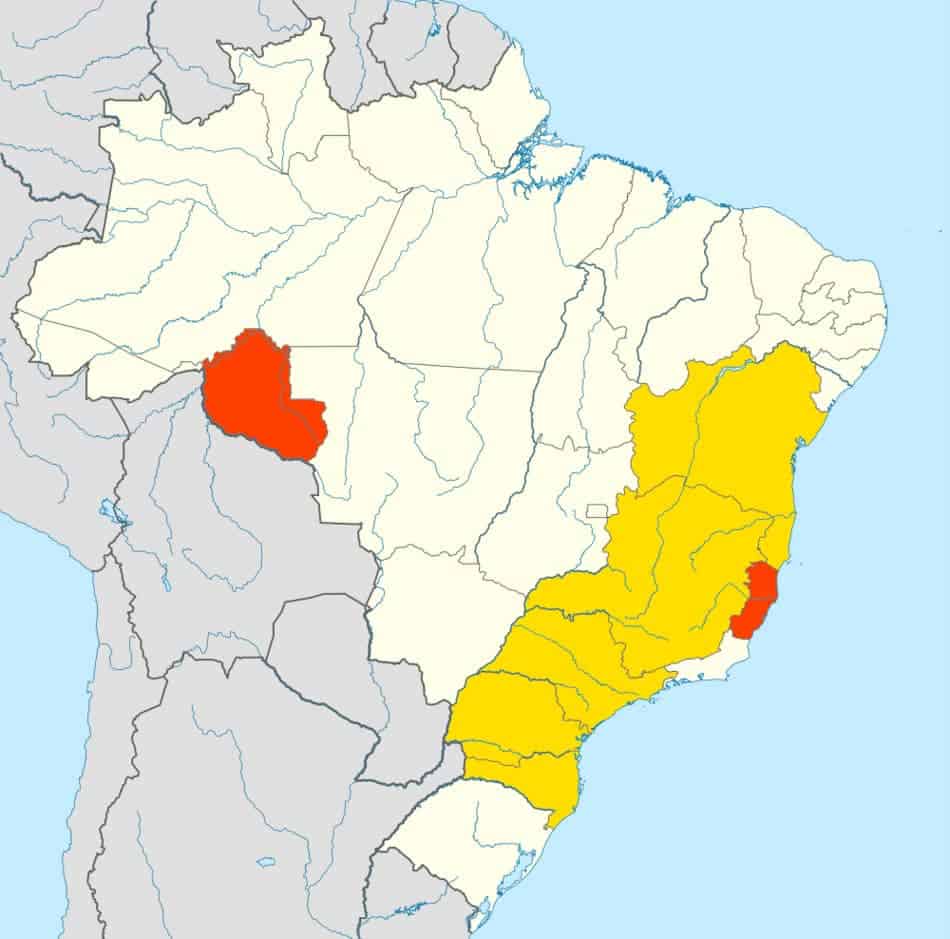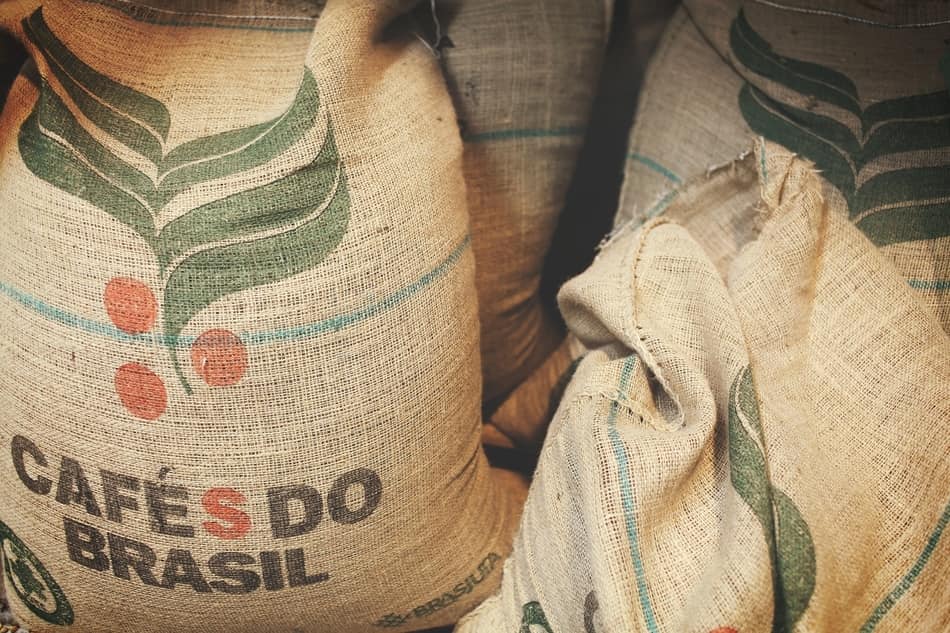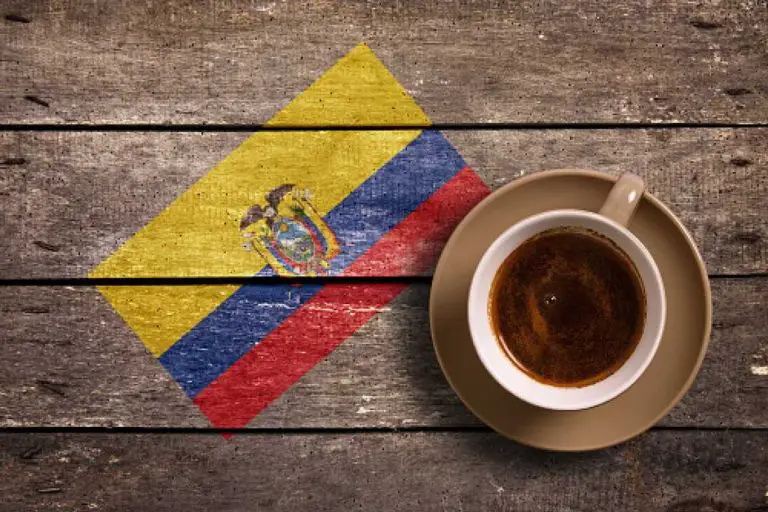Which Country Produces the Most Coffee in 2025?
Coffee production takes place in more than 70 countries around the world each and every year in an area known as the coffee belt. But which one country produces the most coffee?
Brazil is the largest coffee producer in the world. In 2020, Brazil produced 3,558,000 metric tons (7,844,000,000 pounds) of coffee, accounting for one-third of all the coffee produced worldwide. The arabica species makes up 69% of Brazilian coffee, with robusta making up the remaining 31%.
Despite producing a staggering one-third of the world’s coffee, Brazil used to produce a lot more.
Coffee production in Brazil
Brazil has been the world’s largest coffee-producing country for more than 150 years.
Brazil produces two types of coffee beans, which are the arabica variety and the robusta variety. Last year, Brazil produced almost double the amount of coffee of second-place Vietnam.
| Total production | Arabica | Robusta | |
|---|---|---|---|
| Metric tons | 3,558,000 | 2,460,000 | 1,098,000 |
| Pounds | 7,844,000,000 | 5,423,000,000 | 2,421,000 |
Approximately 3.5 million people are involved in the coffee industry in Brazil, mostly in rural areas. There are around 220,000 coffee farms, which span some 10,000 square miles (27,000 sq km). That’s almost the size of Belgium.
The six Brazilian largest coffee-producing states are Minas Gerais (1.22 million hectares); Espírito Santo (433,000 hectares); São Paulo (216,000 hectares); Bahia (171,000 hectares); Rondônia (95,000 hectares); and Paraná (49,000 hectares).
Despite the huge swathes of land that the coffee growing regions cover, the vast majority of coffee farms in Brazil are smallholdings that are less than 10 hectares (25 acres) in size.

Brazil produces most of the arabica coffee variety in the east, particularly in the southeastern states of Minas Gerais, São Paulo, and Paraná.
Minas Gerais alone produces around 50 percent of Brazil’s total coffee output. The state has the ideal topography and climate for growing coffee, as well as low land prices and cheap labour.
Farmers primarily grow the Robusta variety, known as conilon in Brazil, in the southeastern state of Espírito Santo, where it accounts for about 80 percent of all coffee production.In recent times, the northwestern state of Rondônia has also come to produce large quantities too.
Despite being the world’s largest coffee producer, coffee is not native to Brazil but was first introduced in the 18th century. From a few humble seeds, Brazil became the coffee-producing behemoth that it is today.
History of Brazilian coffee production
Then under Portuguese rule, the country was looking for a cut of the emerging coffee market, but there was a problem. Neighbouring French Guiana was refusing to export their coffee seeds.
According to the story, the government sent Francisco de Melo Palheta to French Guiana on a diplomatic mission to settle the border dispute between the two countries.
During his visit, Palheta managed to seduce the wife of the governor and, upon his departure, the woman gave Palheta a bouquet of flowers containing hidden coffee seeds.
Whether or not the story is true, we do not know. However, we do know that Palheta planted the first coffee seeds in the northern state of Pará during the early 18th century.
The crop remained relatively unimportant until it began moving south through the country, passing from garden to garden.
Production soars
Production really took off in the 1820s, so much so that it overtook the demand of the native Brazilian coffee drinkers. This surplus led Brazil to start supplying the global coffee market.
By 1830, Brazil was producing 30 percent of the world’s coffee. By 1840, that figure had risen to 40 percent, with Brazil enjoying total domination on the world coffee market.
However, the sudden surge in production was bittersweet as it caused global coffee prices to decrease significantly in value.
The huge growth also meant that the industry had to rely on slave labour from Africa. More than 1.5 million slaves were brought to work on the coffee plantations in Brazil.
When the British put a stop to Brazil’s slave trade with Africa in 1850, the country was forced to turn to internal slave labour.
Despite abolishing slavery in 1888, the coffee industry continued to grow and thrive. By 1920, Brazil was producing 80 percent of the global output of coffee. During this time, the coffee industry was financing a great deal of infrastructure within the country.

Too much coffee
Once again a victim of their own success, the Brazilian government had to burn around 78 million bags of stockpiled coffee in the hope of raising coffee prices on the global market.
With the effort resulting in little success, the Brazilian government turned to the emerging instant coffee market as a way to make use of the huge surplus of coffee beans.
People made various efforts in the 18th and 19th centuries to produce soluble coffee, but they found the results less than satisfactory.
And so, the Brazilian Coffee Institute approached Nestlé in 1930, asking them to create a more flavoursome instant coffee.
It would be seven years before a breakthrough occurred. In 1937, Nestlé scientist Max Morgenthaler invented a new method for producing soluble coffee using dried coffee extract together with soluble carbohydrates.
Production began the following year and became the first version of the product we all know today as Nescafé.
Unstable coffee market
During World War II, declining coffee prices arose when European markets shut off. Officials drew up an international agreement based on a quota system, which helped increase and stabilize the price of coffee by the mid-1950s.
In 1962, countries signed the International Coffee Agreement to further stabilize coffee prices. The International Coffee Organization determined the indicator coffee price, and quotas were fixed accordingly.
The agreement lasted until 1989, when Brazil refused to accept a reduction in its quota due to the belief that the country could prosper outside of the agreement.
This proved to be the wrong decision, with prices dropping dramatically over the next five years. To aid the crisis, the Fair Trade movement became involved.
Because Brazil accounts for one-third of all the coffee produced worldwide, anything that affects the country’s production has a knock-on effect for the rest of the world.
Huge swings in production caused by the country’s aggressive plant pruning is still causing issues in the 21st century, most notably in 2002 when an enormous harvest created an excess, causing coffee prices to fall.
Brazilian coffee production facts
Something that is unusual for arabica coffee grown in South America is that virtually all of the coffee in Brazil is processed using the dry process. The dry process comes in two varieties in Brazil: natural and pulped natural.
Most South American countries remove the outer cherry fruit covering, fermenting the beans in water to remove the mucilage. This process is known as the washed process.
Drying the cherry
Drying the cherry together with the beans imparts a distinct, fruity and booze-like quality to the coffee beans.
Brazilian arabica coffee is also grown at far lower altitudes than is found in most other coffee-producing countries. Altitudes in certain states such as Matas de Minas are as low as 550m (1800ft) above sea level.
Altitude is important for a coffee plant’s survival as the temperature is both cooler and more stable, and there is less chance of attack from pests as fewer reside at high altitude.
Altitude is also important as it imparts a wonderful acidity to the coffee beans. You probably don’t associate acidity with coffee due to the misnomer that all coffee is bitter, but acidity adds a refreshing quality to coffee just as it does to wine.
Another unusual aspect of Brazilian coffee is that workers do not always harvest the coffee cherries by hand. In most countries, farmers must manually pick the cherries because coffee grows on hillsides or in densely packed forests.
In Brazil, the coffee farms are generally a lot flatter, which provides the opportunity for stripping the plants using a machine.
The machines straddle the coffee plants, using vibration to remove the coffee cherries from the branches.

Although the method is requires a lot less labour, it often results in poor-quality coffees. Since coffee cherries ripen at different times, picking them by hand ensures that only the ripest cherries are selected.
If the farmer’s goal is to produce a good-quality coffee, they have to separate the under-ripe cherries post-harvest. Unfortunately, many farmers do not separate the under-ripe cherries, which is why Brazil produces so much low-grade coffee.
No doubt this article has left wondering what good-quality Brazilian coffee tastes like.
If you would like to purchase a packet of freshly roasted Brazilian coffee that can be delivered straight to your front door, check out The Best UK Specialty Coffee Roasters in 2021.
References
- Index Mundi
- World Atlas of Coffee by James Hoffmann
- Plant-Parasitic Nematodes of Coffee by Ricardo M. Souza
- brazil.gov.br
- coffeeresearch.org
- Coffee production in Brazil – Wikipedia







